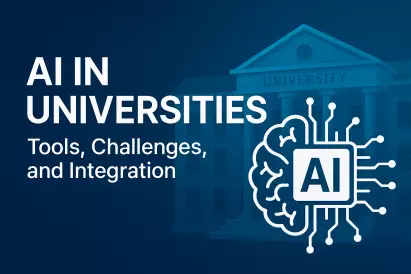Summary: Discover how Master’s programs in Innovation Awards are transforming higher education in Far East Asia through tech integration, sustainability goals, interdisciplinary learning, and growing student demand. We explore market data, macro trends, emerging curriculum formats, employability, policy updates, and international competition.
Market Size and Educational Context in Far East Asia
In 2025, the educational landscape for Innovation Awards Master’s programs in Far East Asia is experiencing vigorous growth.
Although exact enrollment figures for Innovation-specific tracks are not isolated, regional data from China, South Korea, Japan, and Singapore reveal that the collective Master’s student population has been rising steadily by 5% to 7% annually.
This uptrend is underpinned by widespread governmental support for innovation, increased international student flows, and intensified regional collaboration. There’s also growing diversity among student demographics, especially with STEM-based backgrounds and rising mobility from within Southeast Asia.
Students interested in complementary specializations like Entrepreneurship or Digital Marketing are increasingly attracted to Innovation-centric programs.
Macroeconomic and Structural Drivers Shaping Innovation Education
The innovation surge in education is the result of deep-seated macroeconomic transitions, including a pivot toward AI-led knowledge economies. Regional governments are embracing innovation policy incentives, facilitating patent ecosystems, and encouraging cross-border research alignment.
Driving factors include:
- Rise of AI, IoT, and smart tech as economic pillars
- Digital transformation embedded in national strategies
- Increased emphasis on sustainability and the circular economy
- Skills shortages in emerging innovation areas
- Intensified technological rivalry and strategic trade alignments
The shift also creates opportunities in programs like Corporate Finance and Corporate Communication where innovation intersects with business decision-making.
Curriculum Trends and Evolving Student Demands
As of 2025, Master’s in Innovation programs are undergoing major restructuring to reflect contemporary demand. Curricula now target competencies in:
- Design thinking and digital innovation strategies
- Immersive technologies including AR/VR
- Smart city development and green innovation
Programs are largely interdisciplinary, bridging engineering, business, and social sciences. A key hallmark is experiential learning: students engage in applied research, innovation labs, and industry co-development projects to ensure employability.
Flexible learning structures like micro-credentials and modular stacks dominate program design, supporting customization.
International delivery formats such as hybrid and online courses—often enhanced by AI—extend global access.
These trends resonate with students equally considering tracks such as Creativity and Design Thinking or Big Data Management.
Skills Development and Employer Expectations
Master’s graduates in innovation are expected to possess a mix of technical knowledge and soft skills.
In demand technical skills include data science, product innovation, and AI implementation—complemented by transversal skills like leadership, adaptability, and cross-cultural fluency.
As innovation-driven sectors expand, companies hunt for graduates well-versed in:
- Sustainable product design
- Data-driven decision-making tools
- Ethics in AI governance and deployment
Placement opportunities for graduates increase in startups, innovation consultancies, and multinational R&D labs, with salary bands rising accordingly.
Professionals from HR management tracks are also working to recruit such hybrid-skilled talent.
Quality Assurance, International Recognition, and Policy Trends
To enhance regional mobility and international competitiveness, Far East Asian nations are aligning their education quality frameworks with global benchmarks. This entails robust accreditation systems, expanded credit transfers, and cross-national partnerships.
Programs are building toward dual degrees and transnational innovation hubs.
Nations like Japan and Singapore have reformed visa pathways to retain skilled international graduates, especially in AI and climate innovation sectors.
These reforms also impact adjacent programs in Sustainable Development Education and International Management.
Program Accessibility, Tuition, and Financial Support
Access to Master’s programs in Innovation varies by institution and country.
Generally, tuition fees fall within mid-to-high professional education tiers. Many governments subsidize domestic participation and extend scholarships to attract international applicants.
Employer sponsorship of promising employees pursuing advanced education is a growing trend, recognizing strong ROI in innovation skills.
Programs invest heavily in tech-based learning tools to improve outcomes, ranging from virtual labs to real-time data simulators.
Students comparing affordability often explore regional alternatives in programs like General Management or MBA tracks.
Regional Competition and Global Integration
Innovation education in Far East Asia is highly competitive, with top universities attracting millions in international student applications annually.
While outbound study to Western institutions continues, inbound flow to local programs is rising due to improved infrastructure, industry partnerships, and digital delivery modes.
Additionally, regional EdTech innovators and bold curriculum reformers are disrupting traditional models via dual degrees and startup incubator partnerships.
This shift challenges the appeal of traditional Western study routes.
Master’s pathways in Launching Awards also intersect here, supporting entrepreneurial mindsets within Innovation programs.
Future Outlook: 2025–2028
The outlook is promising for Master’s-level innovation education. Governments aim to deepen AI fluency, expand applied STEM collaboration, and promote lifelong learning frameworks. Increased private-sector funding is expected in sustainability research and green product innovation.
Key developments to watch include:
- Cross-border agreements on talent sharing and credential mobility
- Digital governance policies around AI-focused education
- New incentives for circular economy curricula and R&D investment
Far East Asia is well-positioned to establish itself as a global hub for elite Innovation Awards programs, drawing students from all borders to meet the social, technological, and environmental challenges of tomorrow.
Learn more by reviewing the official Innovation Awards rankings or explore related programs in Innovation and Project Management.



